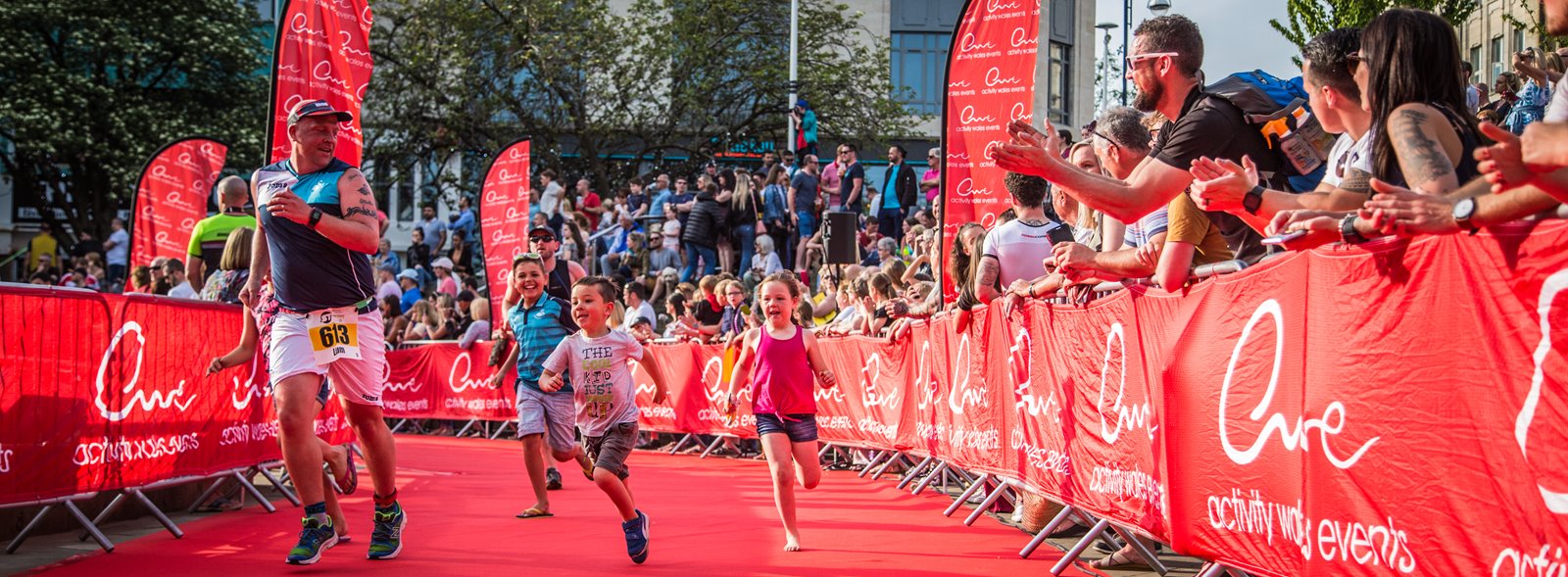First Timer Guide - Triathlon
Our guide to your first time at one of our events
If you've never entered a triathlon before – DON’T WORRY! We have years of experience and are happy to help you in any way we can. We have devised a list of helpful tips to get you going from how to enter to a very detailed race day checklist and some tips on training.
Signing Up
Step 1. Visit the Activity Wales Events website
Step 2. Pick an event so you have had enough time to train for it. We advise giving yourself 3 months.
Step 3. Find a race labelled as a “sprint triathlon.” The exact distances will vary for these shorter triathlon shorter races due to the terrain of the specific course, but most sprint distance triathlons are about this distance:
- 750m Swim
- 20k Bike Ride
- 5k run
Step 4. Choose a race! Now put all your details into the system and sign up. Now put your credit card away and the hardest part is done! Congratulations you are all signed up!!
Now that you have a solid date in the calendar, let’s get started.
For the Race – What you need and what to do!
Swim
The sprint swim is 750m long so here are a few tips to help you get the best out of your experience:

1. A wetsuit is mandatory – the water temperature will be quite chilly. A specialist swimming wetsuit is ideal, however, a general-purpose/surfing wetsuit will suffice for your first time. It is sometimes possible to rent swimming wetsuits.
2. Get used to open water – a few dips at your local beach with some training partners just to get used to the cold water and lack of visibility will really help you come race day. Stay close to shore and within your depth for safety.
3. Position yourself well – If you are nervous or a weaker swimmer, either position yourself to the side or at the back to avoid the splashing and kicking. Even consider waiting a minute for the main pack to get ahead before setting off – you will then have plenty of space to yourself.
Bike
All our cycle routes are different so practice on hills too. Normally the sprint bike distance is 20k.
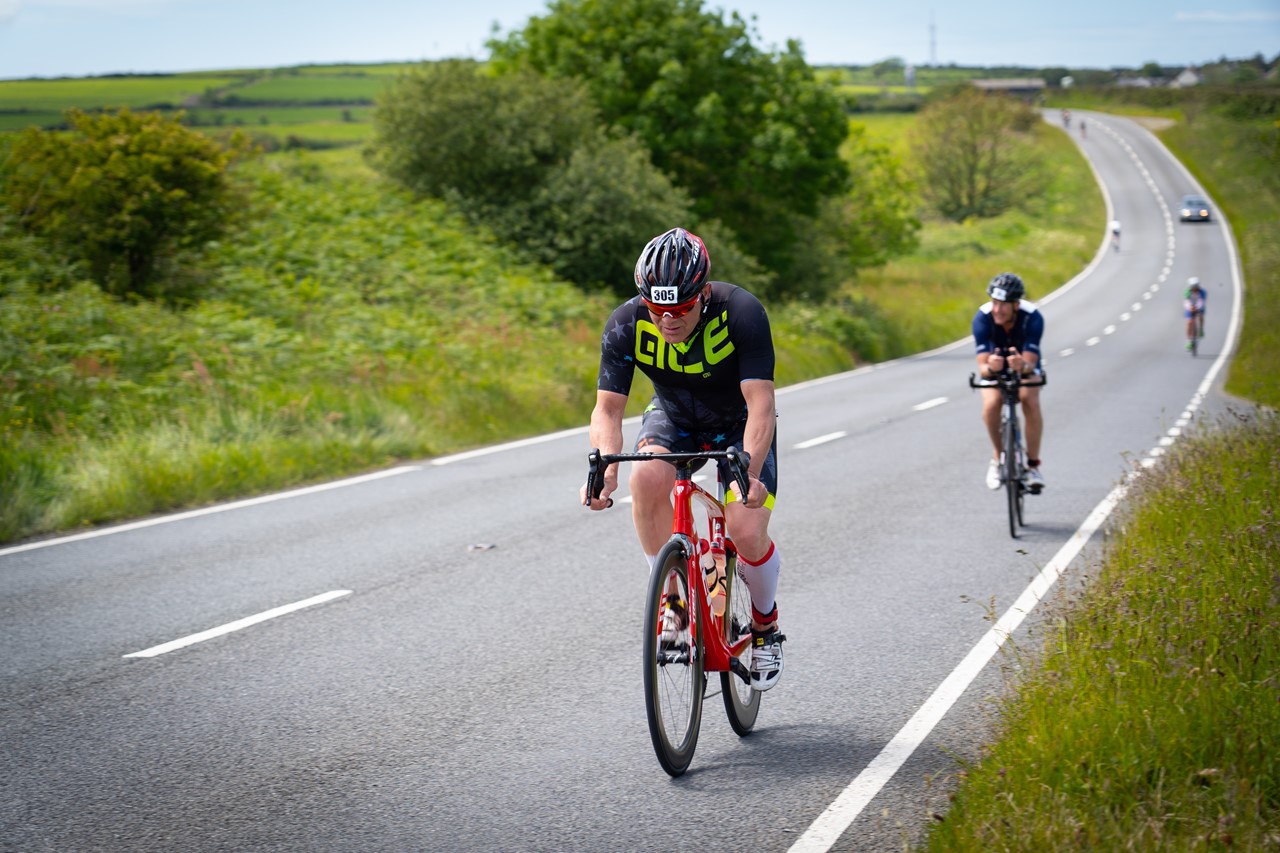
1. Check your equipment – ideally get your bike professionally serviced, but as a minimum, make sure your bike is in good working order – you don’t want your first triathlon to come to an end due to a mechanical problem.
2. Fuel and hydrate – the bike is the easiest place to get some fluid and energy on board. Fill a water bottle with some sports drink (not the fizzy kind) and tape some energy gels or bars to the top-tube (cross-bar) of your bike so you can snack on them as you ride.
3. Start easy – it takes your body a little while to adapt from swimming to cycling, so take it easy for the first few kilometres.
Run
The final part of the triathlon is a 5k run through enthusiastic crowds to finish and receive that amazing bespoke medal.
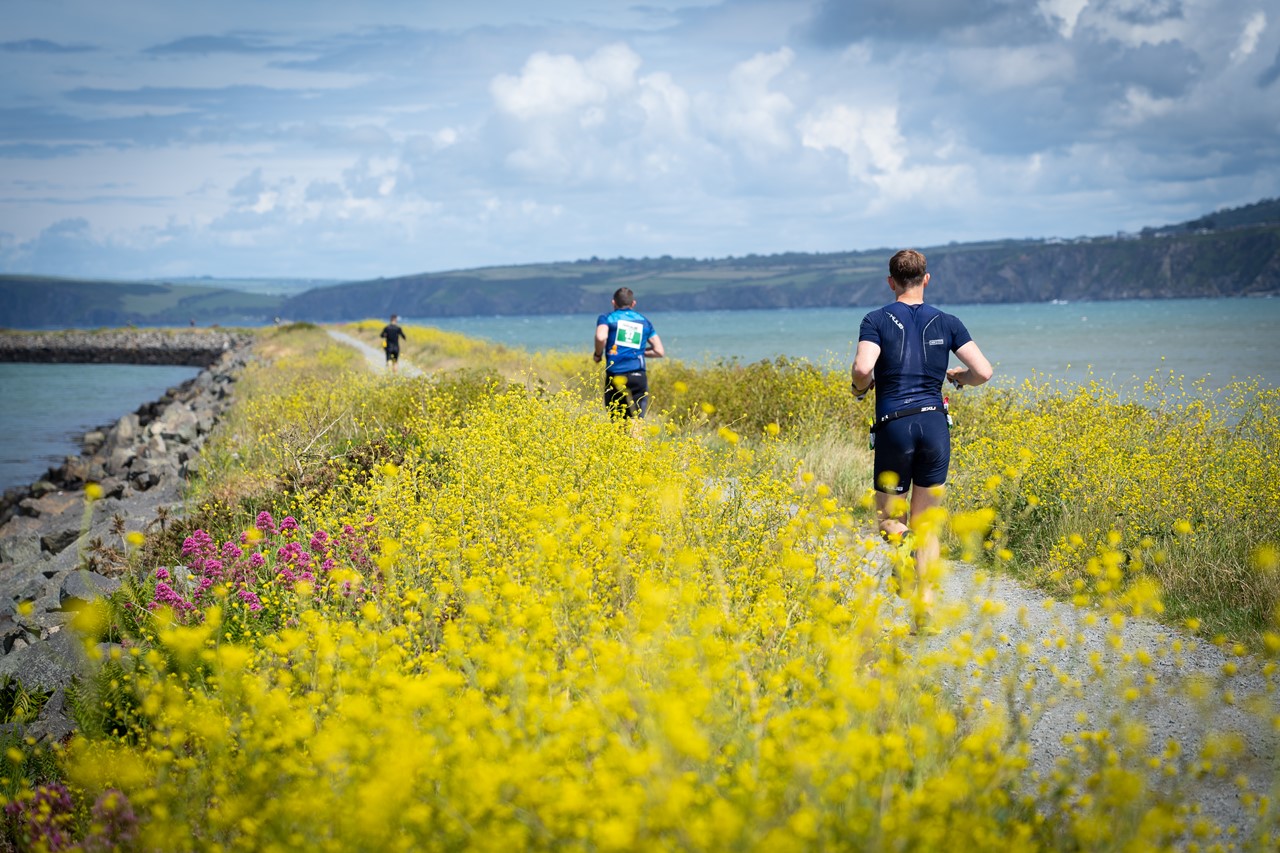
1. Practice running off the bike – your legs will feel like jelly for the first 5-10 minutes. Get used to this by going for a short jog at the end of each training ride – even a 5-minute jog will help get you used to it.
2. A walk-run strategy can work well – sometimes, short walking breaks can help you to actually complete the run more quickly and comfortably.
Transition
Going straight from one discipline to the next can be the most stressful part – a few tips to help you:
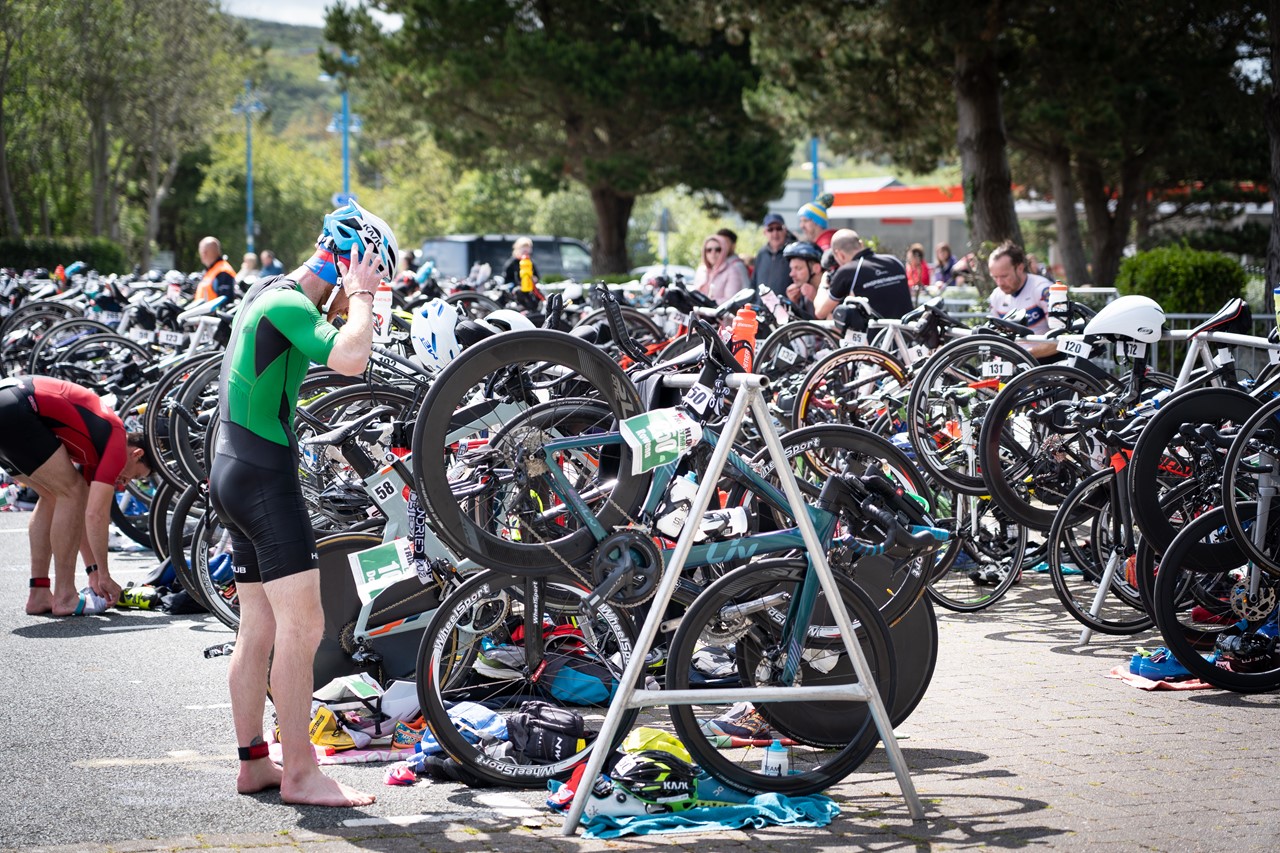
1. Practice transitions – even just mentally running through the routine will help you to ensure you don’t forget anything (and avoid the embarrassment of completing the whole run wearing your cycling helmet!)
2. Take your time – you may feel a little dizzy coming out of the swim – this is natural. Just take your time, walk out of the water, take some deep breaths and compose yourself. Rushing will only cause you to make mistakes.
3. Wear your running/cycling clothes under your wetsuit – trying to discreetly get changed in public whilst out of breath is not a good idea! Wear your shorts and top under your wetsuit – they will soon dry on the bike.
Most importantly – enjoy yourself. You will only ever get one chance to do your first triathlon!
Race Day Checklist
At Activity Wales Events we know that those pre-race jitters can get the better of you, so it’s important to stay calm and make sure you’re fully prepared in order to minimise those nerves. Whether you live just around the corner, or on the other side of the world, here’s a comprehensive list of absolutely everything you’ll need before, during, and after your race; along with some useful extras to guarantee a positive experience.
Pre-race
- Race confirmation
- Race pack (released two weeks before the race)
- Photo ID
- Signed disclaimer (You will have done this online when you registered)
- Personal insurance
- Map & directions to race location & registration (See Website)
- Course map & area map
- Area guide for restaurants and events (see our website)
- Vaseline/anti-chafing lotion
- Hat/visor
- Sun cream
- Lip balm with UV protection
- Toiletries including travel-sized first aid kit
- Earplugs
- Travel alarm
- Your usual pre-training breakfast(we recommend not changing your routine for a race – race as you train)
Race Day
The Swim:
- Wetsuit
- Tri suit under the wetsuit (tested prior to race day for comfort)
- Goggles
- Swim cap(optional) – We will provide a swim hat which you MUST wear, but you can wear a second underneath if you wish
- Non-petroleum lubrication– for wetsuit removal & reduce chafing (petroleum-based lubrication such as Vaseline destroys wetsuits
Bike:
- Bike– important
- Helmet – mandatory
- Cycling or triathlon shoes
- Socks(e.g. Polyamide/merino wool – we recommend not using cotton)
- Gilet/jacket (if necessary)
- Sunglasses
- Bike computer (optional)
- Bike frame bag (repair kit, pump, nutrition, inner tube etc.)
- Pump or CO2Inflation system – frame pump/cartridge & inflator – remember, you are responsible for changing any punctures
- Spares– inner tubes, patch kit, tyre levers
- Chain lube
- Water bottles
- Nutrition
Run:
- Trainers(we recommend not buying brand new ones for the event. Make sure you test your running shoes & know they’re comfortable)
- Socks– again, not cotton to help prevent blisters
- Hat/visor
- Short/long-sleeve shirt for race, as weather dictates
- Shorts/tights as weather dictates
- Gels or sports drink(if you train with them – race as you train)
- Plasters/nipple guards(if necessary)
General/Transition:
- A small towel to wipe feet – microfiber recommended for fast drying
- Race belt– easier & quicker than safety pins/cable ties
- Race number & timing chip
- Waterproof sun cream
- Talcum powder to get socks on quickly
Post-race
- Extra socks
- Compression clothing to aid recovery
- Warm, comfortable clothing to minimize illness/injury/chafing
- Waterproof jacket
- Food for replenishment
- Wash gear for cleaning up afterwards – note a wet towel in a bag does a good job if you can’t get to a shower
- Towel– your transition towel will most likely be filthy
- Ibuprofen to reduce inflammation
Useful extras:
- Plastic bags for ice, wet/dirty clothes and swift wetsuit entry
- First aid kit & insect bite cream
- Duct tape
- Waterproof permanent parker
- Safety Pins(& cable ties to secure race number – race belts are an easier option & available at the expo)
- Spray lube(WD40)
- Track pump for proper inflation before the race
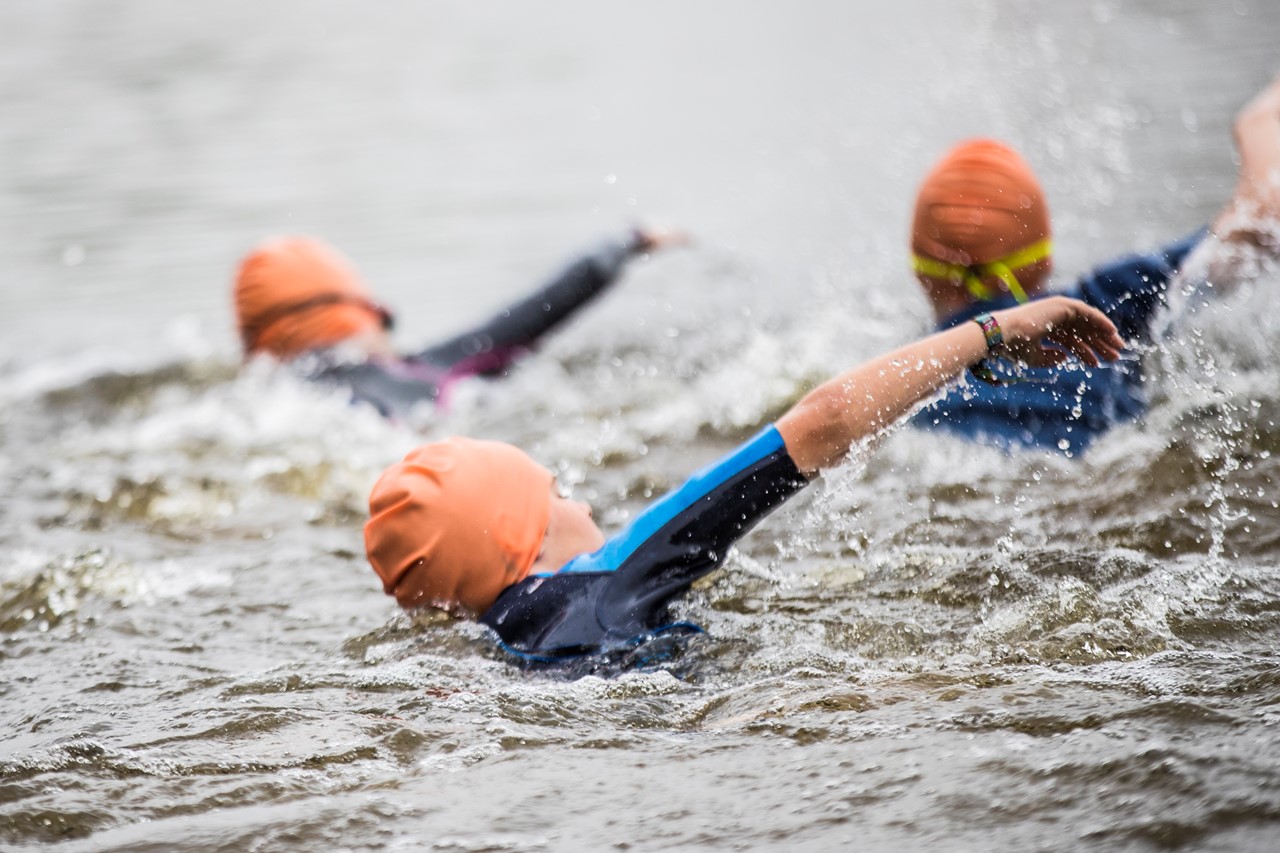
Training
Week One:
A progressive build of training with one to two key workouts in each discipline that are unmissable. Other workouts are supporting, although still important. We will break down a typical week later.
Week Two:
Often replicate the key sessions completed in week one, with perhaps a small progression or evolution of the focus. Repeating workouts is a great tool, (more of that later).
Week Three:
A chance to integrate two to four days of lighter activity and training to allow rejuvenation, and also perform benchmark workouts or assessments. This is not a recovery week; we don’t do week-long periods of recovery.
Week Four:
Fall back to the similar focus of week one, with the progression of load in the key sessions. This will be a challenging week of training.
Week Five:
Again, we replicate the key sessions (with potential evolution or progression). Your chance to nail those key sessions and learn from the mistakes in the previous week of training.
Week Six:
This is the last week in the mini-cycle, and a chance to rejuvenate with some easier work, as well as hit some intensity. I will often place a short early season race in this week.
There are several aspects to highlight in this one example of a progressive training cycle. These include repetition, recovery and benchmarks.
For the amateur athlete, it obviously makes sense to build a training plan that is based around the days of the week. Planning and consistency are key, although it is worth pointing out that flexibility with the plan is also going to be important, dependent on changes life circumstances, how you feel in the workout etc. In any given week you should never load seven days of training back-to-back and expect positive long-term benefits. You may not physically need a complete day off, outside of emotional and social balance, and I often have athletes exercise every day of the week many weeks. The key is to ensure there is a variance in load. By dropping volume (duration), as well as intensity (except neuromuscular drills and speed), you can implement a session that is therapeutic and helpful in the recovery process.
I often follow what we call a three to two pattern:
Days One To Three:
Three days of ‘high’ training load that will, through either volume or intensity, place relatively heavy stress on your system that is designed to produce the stimulus for training adaptations.
Day Four:
Lighter day of exercise that would not include sessions that will place high stress on your system, but will help facilitate recovery and adaptations. They can still be beneficial with technique focus, neuromuscular work etc.
Days Five To Six:
Two more days of load, building training load in from the previous three-day series of work.
Day Seven:
Recuperation and rejuvenation occur again on this day. Massive load won’t occur here, as the goal is recovery and balance.

